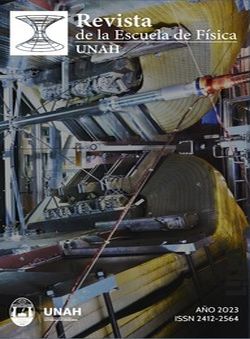“Caminos geométricos” en el espacio bidimensional de Minkowski para obtener las transformaciones de Lorentz y sus consecuencias
DOI:
https://doi.org/10.5377/ref.v11i1.16825Palabras clave:
caminos geometricos, espacio de minkowski, espacio bidimensional, transformaciones de lorentzResumen
En este artículo se aborda un modo no habitual (poco usado en la bibliografía sobre Relatividad Restringida) de llegar a las conocidas transformaciones de Lorentz a partir de consideraciones provenientes del espacio bidimensional de Minkowski. Su característica fundamental, proveniente de la forma no euclidiana del elemento de longitud, es que para pasar de un sistema de referencia a otro se usan rotaciones hiperbólicas; esto supone dejar los círculos (habituales en las rotaciones euclidianas) y pasar a las hipérbolas. Usando esta geometría hiperbólica y las relaciones para ángulos hiperbólicos (equivalentes y muy parecidas a las de ángulos circulares) se generan fácilmente las transformaciones de Lorentz. Para obtener la dilatación temporal, la contracción de longitud y la suma relativista de velocidades se utilizan el espacio minkowskiano y geometría sencilla. Por otro lado, como se sabe, el conocido enfoque de simetrías (vía grupo de Lorentz o Poincaré), es más potente con el análisis tensorial y muy físico. Si bien este enfoque geométrico no es tan poderoso, es muy sencillo y sin duda presenta un carácter pedagógico especialmente para pregrado. Y, por supuesto, si quisiéramos pasar del espacio bidimensional al cuatridimensional, esta vía geométrica se complicaría mucho.
Descargas
296
Descargas
Publicado
Cómo citar
Número
Sección
Licencia
Derechos de autor 2023 Revista de la Escuela de Física

Esta obra está bajo una licencia internacional Creative Commons Atribución-NoComercial 4.0.
© Revista de la Escuela de Física




